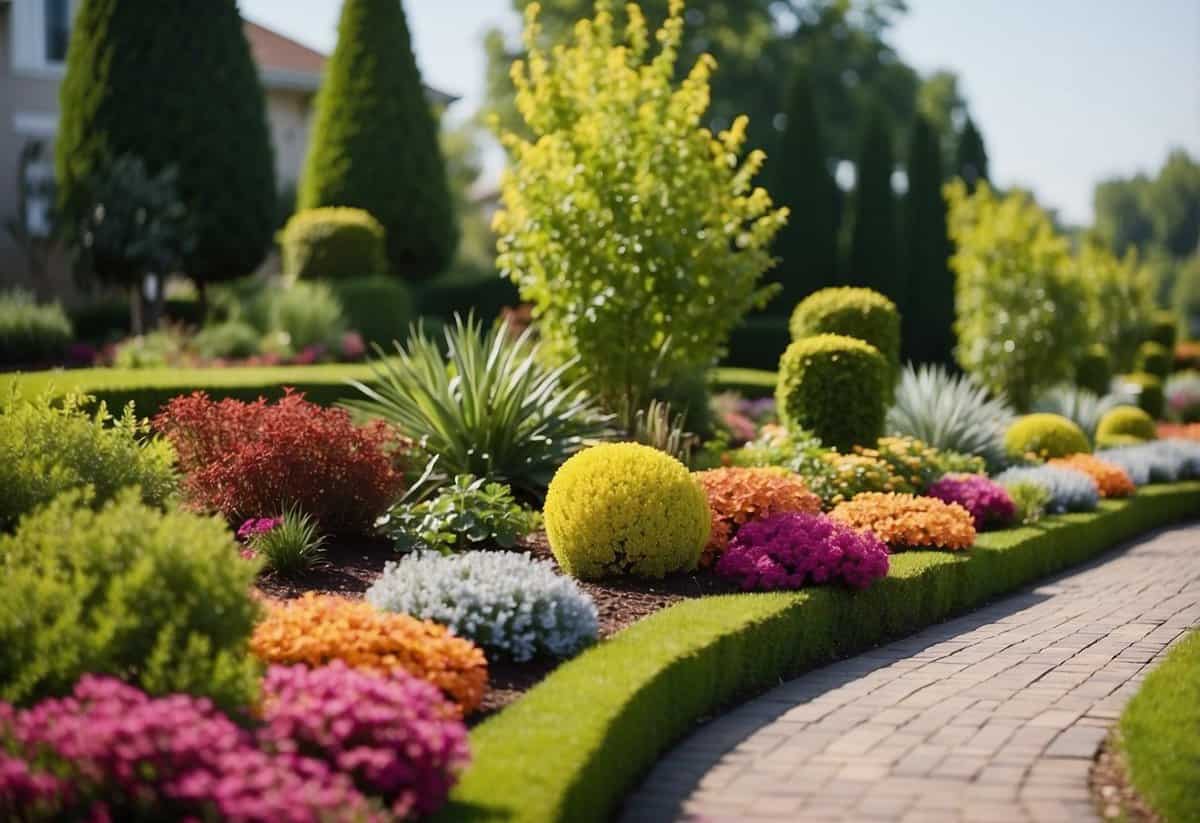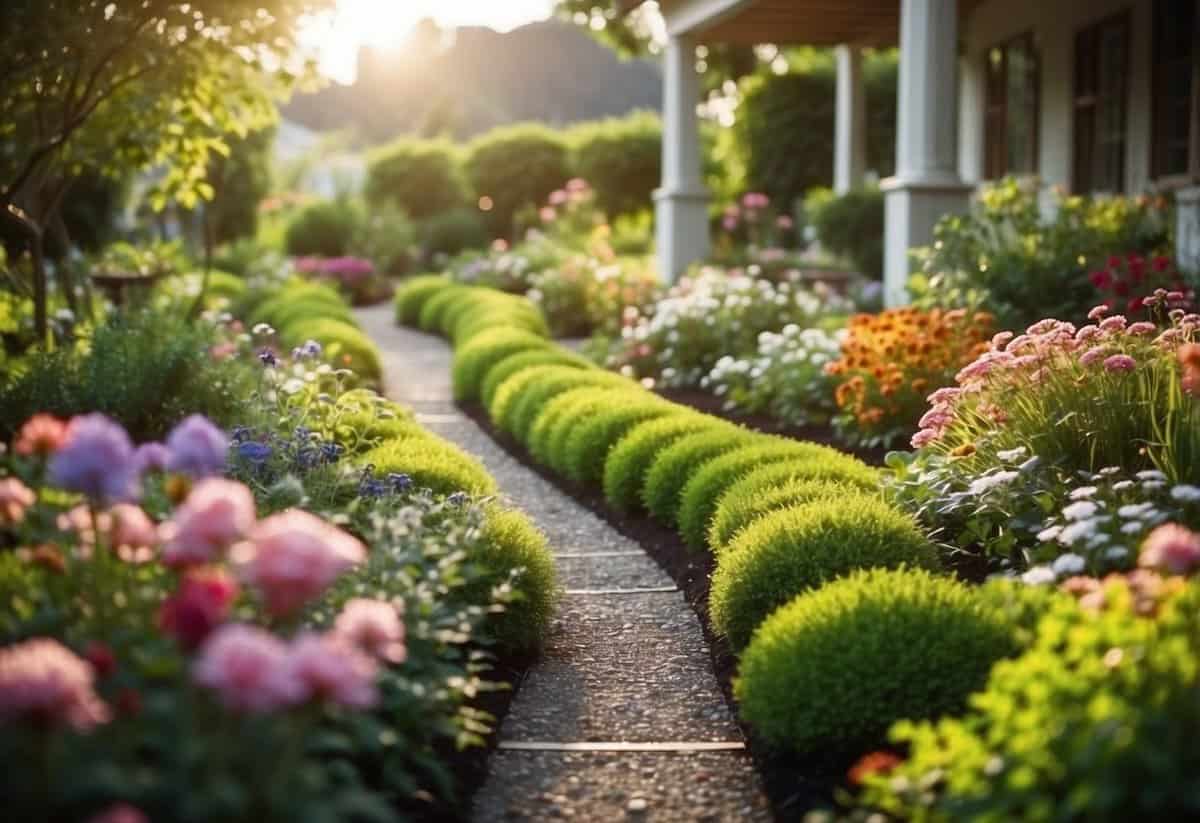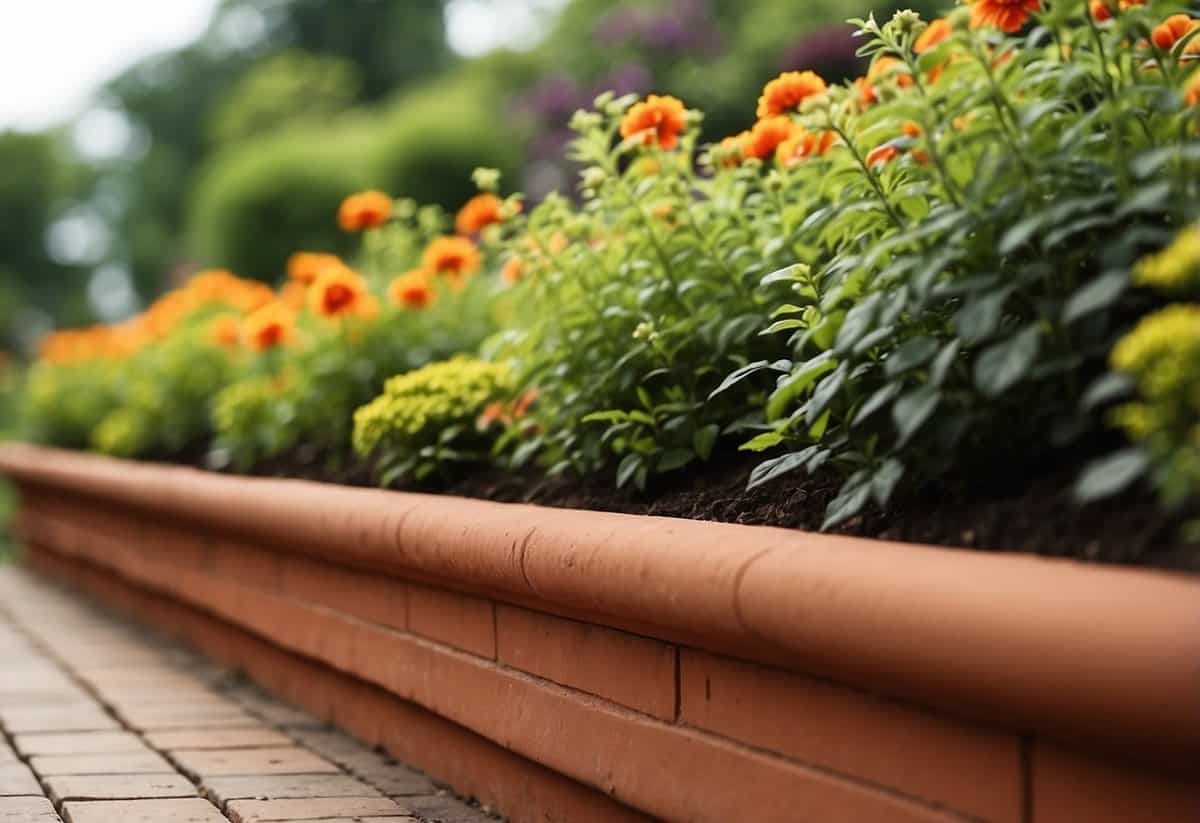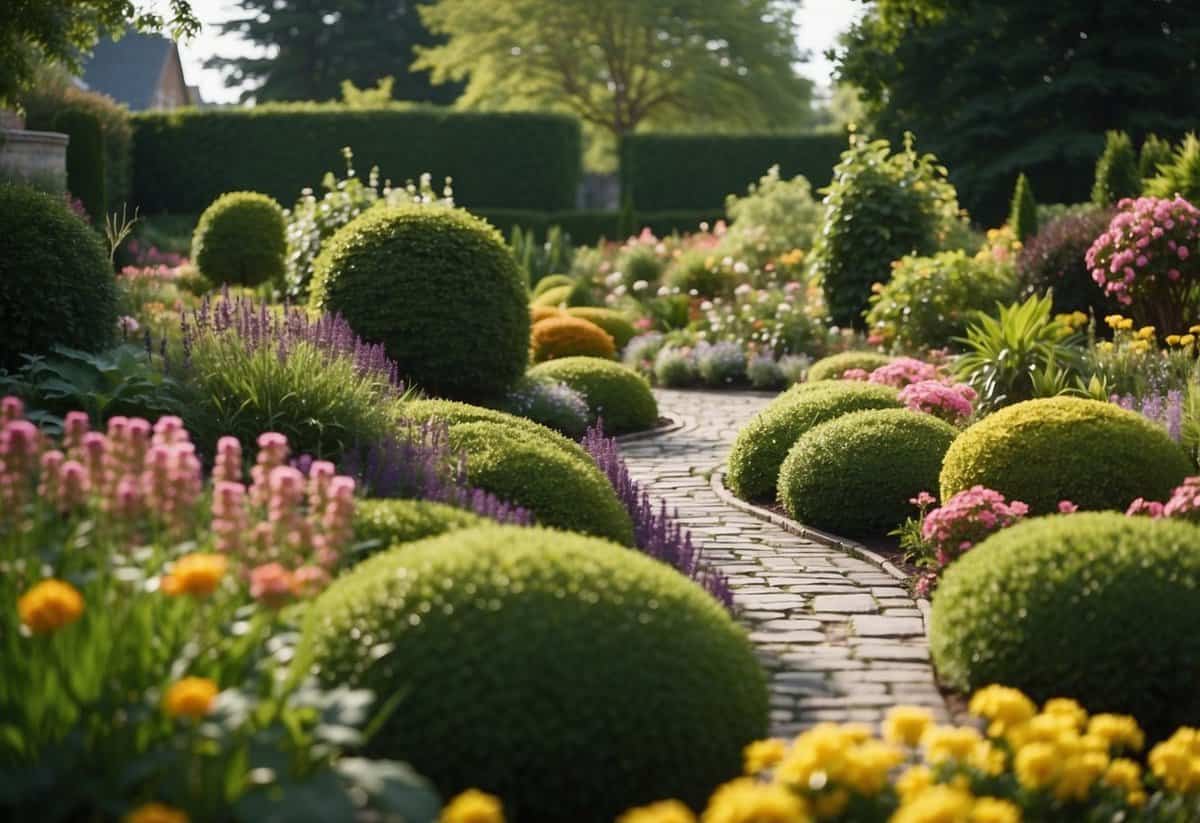Garden Curbing Ideas: Creative Ways to Beautify Your Yard
Transforming your garden with stylish and practical curbing can make a significant difference in your outdoor space. Whether you want to create defined borders, enhance your garden’s aesthetic, or simply make maintenance easier, garden curbing offers diverse options to suit your needs.

What are the best garden curbing ideas to elevate your garden’s look and functionality? In this article, we will explore various ideas and options to help you find the perfect fit for your garden. From sleek modern styles to budget-friendly solutions, you’ll discover a range of ideas that can transform your garden into a beautiful and organized retreat.
1) Brick Edging

Brick edging adds a classic look to your garden. It’s easy to install and relatively inexpensive. You can use it to keep mulch in place and reduce the time you spend weeding.
To start, dig a shallow trench where you want the bricks to go. Fill the trench with a mix of sand and cement. This helps the bricks stick.
Lay each brick carefully into the trench. Make sure they’re level for a neat finish. Once done, the bricks will give your garden a polished and timeless border.
Learn more about this process here.
2) Concrete Blocks

Concrete blocks are a sturdy and inexpensive way to create garden curbs. They are easy to stack and arrange in different patterns. If you paint them with outdoor paint, you can add a touch of color to your garden.
Using blocks allows you to build raised garden beds. They keep soil in place and make it easier to manage your plants.
For a smooth finish, you can cover them with surface bonding cement. Check out these cinder block garden ideas for inspiration.
3) Natural Stone Borders

You can give your garden a timeless look with natural stone borders. They work well with many garden styles, from modern to rustic.
Using different sizes of stones adds a unique touch. Try arranging large and small stones together for a varied look.
Stone edging can highlight your flower beds and keep soil in place. Plus, it’s low maintenance!
4) Eco-Friendly Plastic Edging

Eco-friendly plastic edging is a great choice for your garden. This type of edging is usually made from recycled plastic, so it’s good for the planet.
You can find it in various colors and styles. It’s durable and can withstand different weather conditions.
Installation is easy. You can curve it around any shape you like. Consider this option for a low-maintenance and sustainable garden solution.
5) Metal Garden Edging

Metal garden edging can give your yard a sleek and modern look. It’s durable and can withstand different weather conditions.
You can use materials like Corten steel to create statement borders or chic lawn surroundings. It’s great for creating clean lines and defining garden zones.
Metal edging adds a touch of sophistication to your garden. It’s versatile and can be used to edge flower beds or pathways. Check out some stylish design ideas for your garden.
6) Timber Sleepers

Timber sleepers are a great choice for garden curbing. They bring a rustic and natural look that fits well with most landscapes.
You can use timber sleepers to create raised flower beds or border pathways. Their sturdy nature helps keep soil in place and defines different garden areas.
If you want a layered look, you can stack the sleepers. They work well for creating terraced gardens and multi-level flower beds. Timber sleepers also pair nicely with ponds for added charm in your garden. To learn more, check out some garden sleeper ideas.
7) Terracotta Edging

Terracotta edging adds a warm, rustic charm to your garden. Made from fired clay, these earthy tiles blend beautifully with natural surroundings.
This type of edging is held in place by the soil. To install, loosen the soil, then cover the tile with a wooden block and gently tap it with a mallet.
For a unique pattern, try rope top terracotta edging. It gives a textured look that can make your garden stand out.
8) Pebble and Stone Mosaic

Adding a pebble and stone mosaic to your garden curbing can create a unique and eye-catching feature.
Start by drawing your mosaic design. Use scrap plywood to form a box the size of your mosaic and fill it with sand for support.
Next, place your pebbles tightly together in the desired pattern. For a polished finish, embed pebbles into a mortar mix, pressing them close together for a sturdy edge. This method turns your garden into an artistic landscape!
9) Log Roll Borders

Log roll borders can add a rustic charm to your garden. They are made from short logs attached together, usually with wire, making them flexible and easy to install.
To install log roll borders, dig a shallow trench where you want the edging to go. Place the log rolls in the trench and fill in around them with soil or sand for stability.
These borders are great for defining flower beds. For best results, use pressure-treated logs to prevent rotting, ensuring they last longer.
Learn more about how to fix log roll edging to create perfect borders.
10) Recycled Rubber Edging

Recycled rubber edging is a smart choice for your garden. It’s durable and weatherproof, meaning it can withstand harsh conditions without losing its shape or color. This type of edging is easy to install and maintain, making your gardening tasks simpler.
Using recycled materials is also an eco-friendly option. It helps reduce waste and gives your garden a unique, modern look. Different styles like scalloped edges or straight lines allow you to customize the appearance to match your landscape design perfectly.
Explore more about recycled rubber garden edging here.
Benefits of Garden Curbing

Garden curbing offers many benefits, such as making your garden look more attractive, controlling weeds effectively, and being easy to maintain.
Enhanced Aesthetic Appeal
Garden curbing enhances the look of your garden by providing clean, defined lines between different areas. It can separate flower beds from walkways, making your garden appear organized and neat. Different materials, like stone or metal, can match your garden’s style, adding a decorative touch.
Curbing helps highlight certain plants or features in your garden. For example, sleek metal edging can frame herb beds or raised garden beds beautifully. The contrast between the lawn and the garden area can make the garden landscape look more sophisticated and well-planned.
Effective Weed Control
One practical benefit of garden curbing is its ability to control weeds. By providing a barrier, it helps prevent invasive plants from spreading into areas where they are not wanted. This makes it easier to maintain a tidy garden over time.
Materials like metal, stone, or plastic can be effective in restraining weeds. Curb edging works by creating a physical blockade, making it harder for weeds to penetrate the separated areas. This can save you time and effort in weeding and keep your garden looking its best.
Low Maintenance
Garden curbing is also known for being low maintenance. Once installed, it requires little upkeep compared to other garden features. Most materials used in curbing, like stone or metal, are durable and can withstand various weather conditions without deteriorating quickly.
Cedar lumber, for example, is resistant to decay and insects, offering a long-lasting solution for your garden. This means you can enjoy a well-defined garden with minimal effort, focusing more on growing and enjoying your plants than on constant maintenance.
Materials for Garden Curbing

Choosing the right materials for garden curbing can transform your garden and add a clean, finished look. It’s important to explore different options such as concrete, stone, brick, and metal based on your garden needs and aesthetics.
Concrete
Concrete is a popular choice for garden curbing due to its durability and versatility. You can mold it into any shape, which is great for creative designs. Concrete curbing can be smooth or textured, and you can even color it to match your garden theme.
To install, you’ll need to mix the concrete and pour it into molds. Once it sets, it provides a strong, permanent edge. This material is resistant to weather changes, so it won’t crack or break easily. Though it’s long-lasting, keep in mind that concrete curbing usually requires professional help for a perfect finish.
Stone
Stone provides a natural and elegant look for garden borders. You can choose from various types of stone like slate, flagstone, or granite, each with unique shapes and colors. Stone curbing offers a rustic charm and blends well with garden plants and natural settings.
Installation involves placing stones along the garden edge, often set in a layer of sand or mortar for stability. Stones are heavy and can be a bit challenging to install on your own, but they require minimal maintenance once in place. They are also excellent for creating curved lines in your garden due to their irregular shapes.
Brick
Brick adds a classic and timeless feel to garden edges. With brick curbing, you can create patterns like herringbone or basket weave, which add to the visual appeal. Bricks are available in various shades of red, brown, and beige, providing options to match your garden style.
Laying bricks involves digging a trench, placing a base layer of sand, and setting the bricks in your desired pattern. This method ensures that the bricks remain in place and provide a sturdy edge. Although some moss or plants may grow between the bricks, they are easy to clean and maintain with occasional landscaping.
Metal
Metal curbing offers a sleek, modern look for garden borders. Common metals used are aluminum and steel, both known for their strength and longevity. Metal edging can be thin yet strong, creating a minimalist design that does not distract from the plants.
Installation is relatively simple; you need to dig a shallow trench and secure the metal strips into the ground. Metal curbing resists rust and weathering, making it a low-maintenance option. It’s also flexible, allowing you to create both straight lines and gentle curves in your garden layout.
By considering these materials, you can find the perfect garden curbing that suits your needs and enhances your garden’s beauty.







